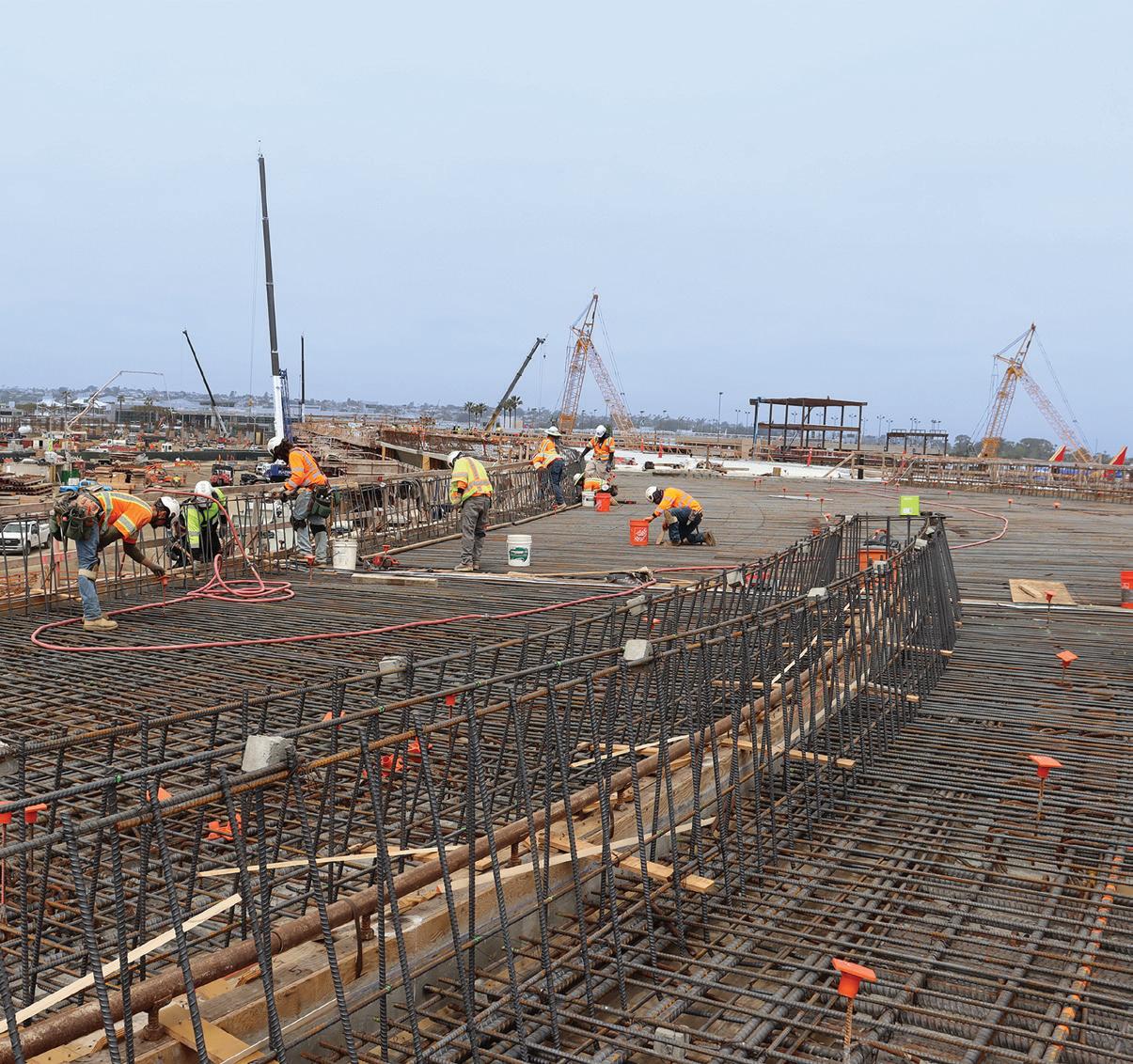
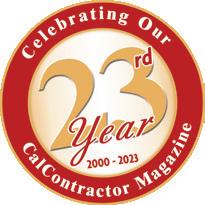
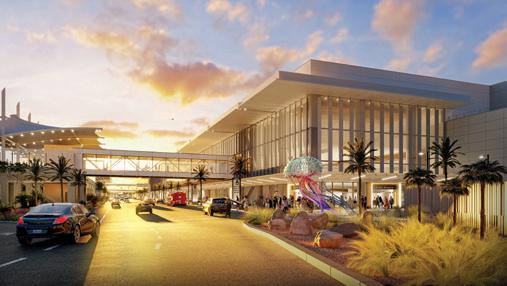



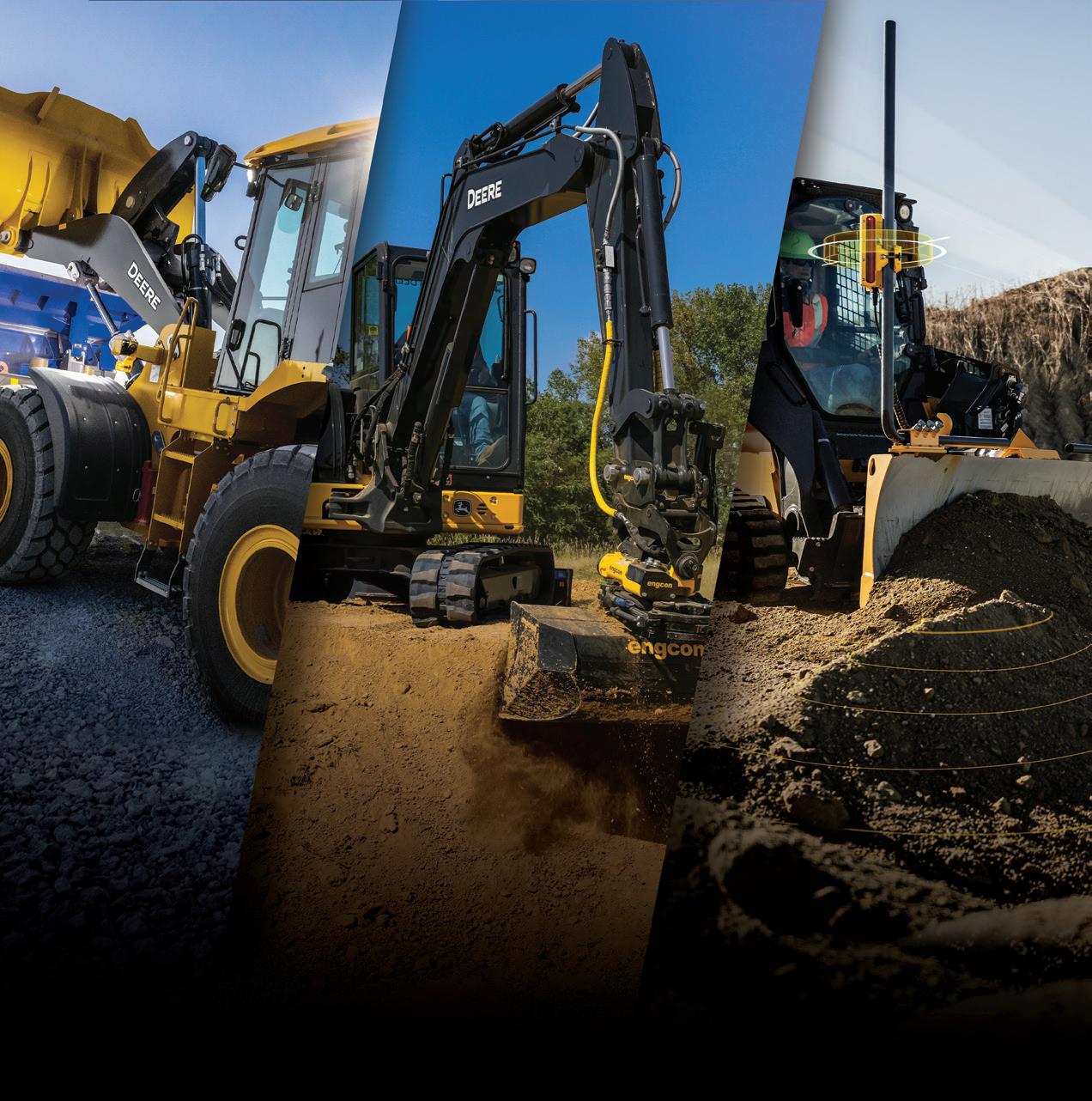



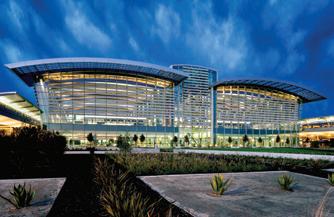
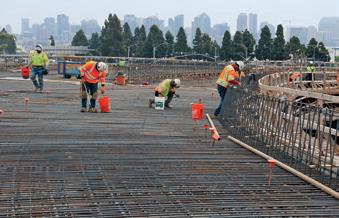
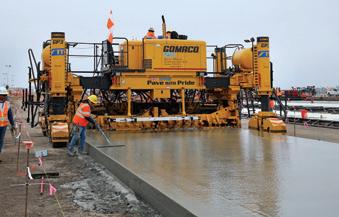
Turlock,

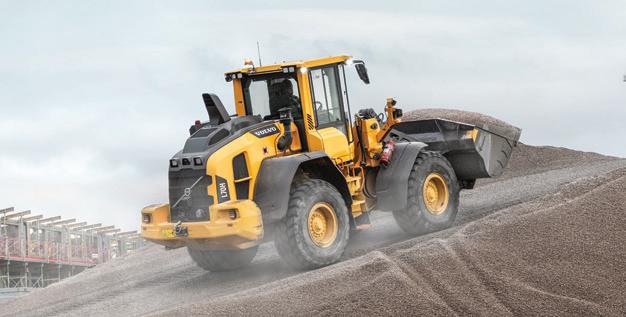
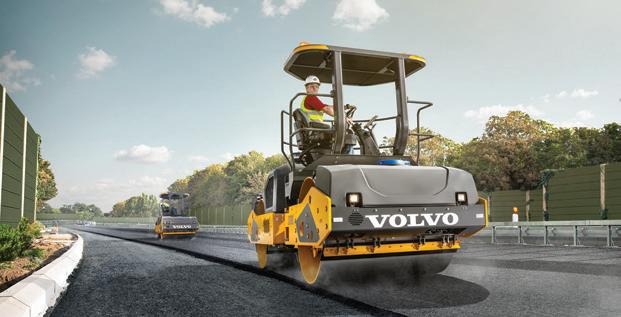
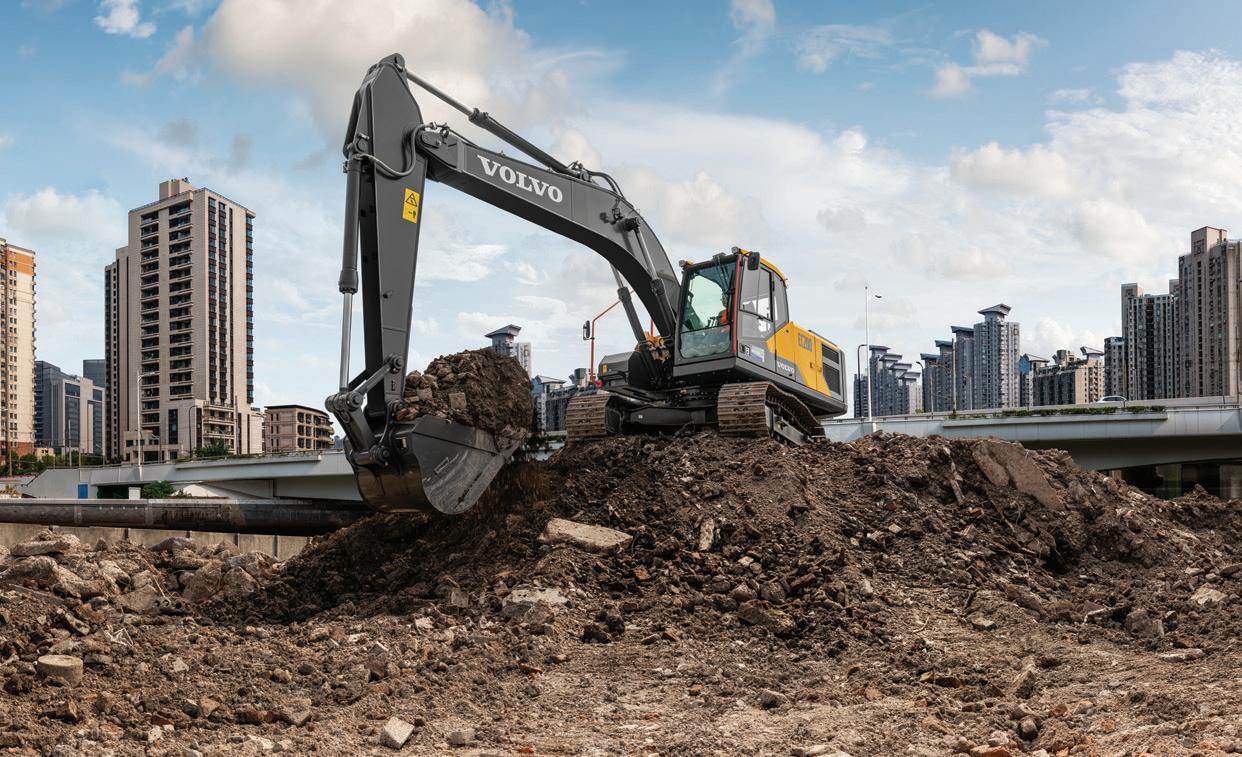














Turlock,





In the early 20th century, the demand for air travel increased significantly, and with it came the need for a network of airports across the United States. California was at the forefront of this development, with its proximity to the Pacific Ocean and its status as a hub of industry and innovation. The first airport in California was established in 1917 in San Diego, primarily for military use during World War I. However, as the war ended and air travel became more accessible to the public, the airport was opened to civilian use, and it quickly became a popular destination for commercial flights.
The first official commercial airport in California was Grand Central Airport in Glendale. It offered the first paved runway west of the Rocky Mountains and served as the departure point for the nation’s first transcontinental airline service. As the popularity of air travel grew, the need for more airports in California became apparent. In 1923, the city of Los Angeles established the first municipal airport in the country, the Los Angeles Municipal Airport, which was later renamed LAX. This airport was located on the outskirts of the city, and its construction marked the beginning of a new era in air travel.
Over the next few decades, California continued to lead the way in airport construction, with the development of many new airports across the state. In 1928,

the city of San Francisco established the San Francisco Municipal Airport, which would later become the San Francisco International Airport (SFO). This airport became an important hub for international travel, connecting California to destinations around the world. Another major airport that was established during this time was the Oakland Municipal Airport, which was built in 1927. This airport was initially used for mail and cargo transport, but it quickly became a popular destination for commercial flights as well.
As the demand for air travel continued to increase, the state of California began to invest in the construction of more airports. In 1935, the state government
established the California Division of Aeronautics, which was tasked with overseeing the development of new airports across the state. One of the most significant airports to be constructed during this period was the Burbank-GlendalePasadena Airport, which was built in 1930. This airport quickly became an important hub for commercial flights, connecting California to destinations across the country. In the following years, many other airports were built across California, including the Long Beach Municipal Airport, the Santa Monica Municipal Airport, and the San Jose Municipal Airport. These airports were designed to accommodate the growing number of air travelers,
Brian Hoover, Senior Editorand they played an important role in the economic development of the state. During World War II, many of these airports were used for military purposes, as the United States government relied heavily on airpower to win the war. However, after the war ended, these airports were once again opened to civilian use, and they continued to play an important role in the development of air travel in California.
Today, California is home to some of the busiest airports in the world, including Los Angeles International Airport (LAX), San Francisco International Airport (SFO), Oakland International Airport (OAK), San Diego International Airport (SAN), Sacramento International Airport (SMF), Bob Hope Airport (BUR), John Wayne Airport (SNA), and Ontario International Airport (ONT), along with many other smaller, regional airports across the state. These airports serve millions of passengers each year, connecting
California to destinations around the world. In recent years, there has been a renewed focus on airport construction in California, as the state seeks to address the challenges of climate change and reduce its carbon footprint. Many new airports are being built with a focus on sustainability and energy efficiency, using renewable energy sources and innovative design strategies to minimize their impact on the environment. State-of-theart airport construction techniques include advanced technologies such as Building Information Modeling (BIM), 3D printing, Prefabrication and Modular Construction, Virtual Reality (VR) simulations, and the use of sustainable and eco-friendly materials. These techniques improve efficiency, reduce costs, enhance safety, and minimize environmental impact, making them essential for modern airport development.
From the establishment of the first municipal airport in Los Angeles to the construction of some of the busiest airports in the world, California has been at the forefront of this development, leading the way in innovation and sustainability. Companies like Tutor Perini Corporation, Swinerton Builders, Turner Construction, Flatiron Construction, Skanska USA, PCL Construction, Clark Construction, Webcor Builders, Hensel Phelps Construction Co., and many others, have extensive experience and specialize in airport construction. This issue of CalContractor Magazine includes several articles featuring airport construction projects currently underway in California. As air travel continues to grow and evolve, the importance of state-of-the-art airport construction methods will only continue to increase, in order to continue providing that vital link between California and the rest of the world. Cc





San Diego International Airport (IATA: SAN, ICAO: KSAN) has a rich history dating back to the early 20th century. In 1918, the United States Army established an airfield at the present site for military training and experimental flights. The field was named Rockwell Field after Lieutenant James H. Rockwell, who died in an airplane crash in 1913. In 1928, a group of San Diego businessmen formed the San Diego Airport Company and purchased the land from the federal government. San Diego Municipal Airport quickly became the busiest airport in the US. During World War II, the airport was used as a training base for Navy pilots. After the war, the airport underwent a series of expansions and renovations to accommodate the growing number of commercial flights. The 1950s brought a new terminal building and a control tower as the expansion continued with more runways throughout the 1960’s and 1970’s.
Terminal 1 at San Diego International Airport was originally constructed in 1967. Terminal 2 was originally constructed in 1979, and was renovated and expanded in 1998 and again in 2013 to add additional gates and provide a
more sustainable, modern, and convenient airport experience. The airport’s name was officially changed to San Diego International Airport in 2003, shortly after the formation of the San Diego County Regional Airport Authority.


Today, San Diego International Airport is one of the busiest single-runway airports in the country, serving more than 25 million passengers annually. The airport has won numerous awards for its innovative design, sustainability initiatives, and customer service.
The San Diego International Airport is currently undergoing yet another major transformation with construction now underway on the new Terminal 1 state-of-the-art 30-gate facility. The San Diego Aviation Alliance (SDAA), also known as the Arrive team, was awarded the contract to design and build San Diego Airport’s new Terminal 1. The team consists of the Turner-Flatiron Joint Venture, with Gensler managing design and overseeing MKA Structural Engineers, and with Kleinfelder and Latitude 33 providing civil design. Once the environmental permits were issued, the Turner-Flatiron Joint Venture began construction in November 2021, starting with
the demolition of vacant cargo buildings and facility maintenance structures. Other early-stage work included the removal and processing of existing concrete and asphalt pavement for later use and the relocation of multiple utilities.
The New Terminal 1 at San Diego International Airport will replace the existing terminal with a brandnew 1.2 million-square-foot modern facility. The project is being completed in two phases to allow for continuing operations of a certain number of gates during the build-out process. The first phase of construction will allow for the opening of 19 new gates in the third quarter of 2025. The second phase will add an additional 11 gates with an opening date in late 2027. When all of the work is complete, Terminal 1 will have 30 gates, for a total of 62 gates available between both Terminal 1 and 2. Passengers will enjoy all of the new restaurants, shops, additional security checkpoints, and more available seating in the gate areas. Design features will include a spectacular exterior dining terrace with views of downtown and the waterfront where passengers can lounge and enjoy a bite to eat while waiting
Left: Steve Rule – Vice President & Project Director. Right: Paul Mignone – Landside/Civil Manager.for their flight. Public art will be displayed throughout. Other sustainable and energy-efficient features include redesigned taxiways that will help to reduce greenhouse gas emissions, and an underground fuel-delivery system resulting in less emissions and quicker turnarounds at the gates. There will also be a new baggage handling system capable of processing up to 2,000 bags per hour. A new 5,324 stall parking
structure with multiple elevations will also be built, as well as an elevated departure roadway (EDR) and an extended “on airport” roadway system that will take inbound airport traffic off North Harbor Drive at Laurel Street.
Turner Construction Company and Flatiron Construction Company were selected as the joint venture partners for the construction of the new Terminal 1 based on their extensive

experience in large-scale infrastructure projects and their strong reputation for delivering high-quality work on time and on budget. Both Turner Construction Company and Flatiron Construction Company are subsidiaries of HOCHTIEF, a Germany-based engineering-led global infrastructure group. Steve Rule is the Project Director for the Turner-Flatiron Joint Venture { Continued on page 12 }
First phase of steel erection for the T1 Terminal Relocation. The teams have to overcome daily challenges with weather and crane heights due to close proximity to the airport.












at the San Diego International Airport. “Turner has teamed with Flatiron in the past on airport projects in Sacramento, Denver, and San Diego, to name a few,” says Rule. “We make a great team. Flatiron has experience in civil construction, including everything from earthwork and utilities to runway and taxiway operations. Turner has extensive experience in the construction of airport terminals globally.”
The project is design-build and is estimated to cost $2.6 billion. “The advantage of a design-build project is that the team can start
releasing packages, purchasing equipment and materials, and hiring subcontractors earlier in the process as that portion of the design is developed. We have taken advantage of this to better manage and mitigate current supply chain issues,” says Rule. The project team expects to have 800 to 1,000 trade individuals working at the peak of construction.
According to Rule, the Terminal is heavily focused on the transition from foundations to structure.
“There is a lot of structural steel being placed, as well as concrete being poured for the elevated departure road (EDR), foundations,

and parking structure. We are continuously pouring concrete as we work west to east with a lot of open ground with rebar installed,” continues Rule.
Terminal 1 will be a structural steel building with cast-in-place concrete on metal pan decks. It is standard commercial construction with some unique added features like the braces (BRB-Buckling Restrained Brace) designed to seismically strengthen the building structure. Crews are also building MSE (Mechanically Stabilized Earth) retaining walls throughout the project and to create the raised roadbeds.
 { Continued from page 10 }
Above: Rebar being completed and elevated deck being cleaned before concrete placement of the elevated departure roadway.
{ Continued from page 10 }
Above: Rebar being completed and elevated deck being cleaned before concrete placement of the elevated departure roadway.
Paul Mignone, Civil Manager on the Terminal 1 Turner-Flatiron Joint Venture project, said, “This is by far the largest ongoing project in San Diego County with the site stretching around a mile from one end to the other,” says Mignone. “Due to the multiple trades working throughout this vast area, the Turner-Flatiron Joint Venture is utilizing Navisworks and Revit, which are essentially 3D modeling programs designed to organize and streamline the construction process. There is so much underground utility work going on, for instance, and we need to know where one trade may conflict with

another. These programs allow us to see the route of each utility with accuracy within two inches. We can see the piles, electrical, plumbing and even create a walk-through rendering to see what the interior of the buildings will look like before any actual work begins.”
The demolition of the existing Terminal 1 building will begin in fall of 2025. “We still need to demolish Terminal 1. Once the new administration building is constructed late this year, we will begin the demolition of the old administration building that is currently active,” said Mignone.
The Turner-Flatiron Joint Venture has a concrete crushing plant onsite to recycle concrete, asphalt, and other reusable materials to build up pads and use as fill material throughout the jobsite. The project is on track to receive sustainability awards for the 100% recycling of certain materials in the construction of roadways and aprons. In addition, the project is pursuing LEED Silver certification for the new Terminal and parking structure.
Mignone points out that it is unique to have a Joint Venture that has the ability to self-perform such a large portion of the work.
“This is such a great partnership where both construction firms have gone above and beyond. We are self-performing the roadway grading and excavation work onsite with the exception of the earthwork at the Terminal baggage claim facility. We will also be performing the concrete paving for the apron work around the Terminal, and are in the process of obtaining approval to batch our own concrete onsite to more efficiently place the apron concrete,” says Mignone. “The

landside SPO (self-perform operations) total quantities are significant, with 68,000 cubic yards of concrete, 14 million pounds of rebar, 52,000 linear feet of pipe, 46,000 tons of hot mix asphalt, and 147,000 square feet of MSE walls.”

The project has been running day and night for several months and is navigating a tight schedule and various logistical challenges. The project team is working to advance the Terminal work in conjunction with the roadway

work all while leaving room to stage, stockpile, and construct all materials and aspects of the projects simultaneously.
The SAN New Terminal 1 project is part of a broader redevelopment plan aimed at modernizing and expanding facilities to better serve the growing number of passengers traveling through San Diego. For more information on the New Terminal 1 project and the TurnerFlatiron Joint Venture, please visit www.arrivesdaa.com Cc
Above: Foundations being formed and placed for terminal steel.







 By Brian Hoover, Senior Editor / Photos provided by Sully-Miller Contracting Co.
By Brian Hoover, Senior Editor / Photos provided by Sully-Miller Contracting Co.
The city of Los Angeles purchased 640 acres of land in Westchester, south of Santa Monica, to build what would become the Los Angeles International Airport (LAX). Construction began in 1940 but the airport was primarily used for military training and transportation purposes during World War II. After the war, LAX returned to civilian use and expanded to accommodate the growing number of commercial flights. By 1960, LAX grew to
become one of the busiest airports in the world with new terminals, and runways being added to handle the ever-increasing demand. This is also around the time when the iconic saucer-shaped Theme Building was constructed. The Tom Bradley International Terminal (TGIT) opened at LAX in 1984 and was named in honor of Bradley who was the first African American mayor of Los Angeles. TBIT underwent a major renovation that opened in 2013 and expanded the
terminal’s capacity to handle larger aircraft and more passengers.

Recently, Los Angeles World Airports (LAWA) and LAX have undertaken multi-billion-dollar terminal modernization projects to renovate existing structures, including Terminals 1 through 8. The Automated People Mover (APM) partially opened to the public in November 2020 and is expected to be fully functional sometime in 2023. The Consolidated Rent-a-car
{ Continued on page 18 }

ww w.gomaco.com | info@gomaco.com
®
At the hear t of GOMACO equipment is our passion for concrete and our commitment to our customers We look for ward to visiting with you about your upcoming paving projects and your concrete paving equipment needs. Our worldwide distributor network and our corporate team always stand ready to ser ve and assist you



Riverside, California
(909) 879-1438
Sacramento, California
(916) 388-2480
Las Vegas, Nevada (800) 350-9230
Your authorized GOMACO distributor for California, western and southern Nevada, and the Hawaiian Islands
Center (ConRAC) is a 5-story, 6.4 million square foot facility that houses over 18,000 rental cars for various rental car companies.
ConRAC opened on April 19, 2021, and is now one of the largest facilities of its kind in the world. Today, LAX is one of the busiest airports in the world, serving millions of passengers each year and connecting Los Angeles to destinations around the globe. It is also an important hub for several major airlines, including American Airlines, Delta Air Lines, and United Airlines. Overall, these projects aim to improve the passenger experience, reduce traffic congestion, and promote environmental sustainability at LAX.
Runways, taxiways, and aprons are also regularly constructed and upgraded at LAX. These include but are not limited to the South Runway Improvement Project in 2017, the Center Taxiway Improvement Project in 2018, the New North Taxiway Project in 2019, and the Terminal Area Improvement Project in 2021, which relocated and expanded several taxiways to improve safety and increase efficiency in the terminal area.
Sully-Miller Contracting Co. (Sully-Miller) has been involved in several paving and infrastructure rehabilitation projects at LAX over the past several years. In 2018, Sully-Miller began paving and grading work as part of the Airport Roadway and Utilities (ARU) Project. This included the construction of new roadways, parking lots, and underground utility upgrades. In 2019, SullyMiller was contracted to construct the new Taxiway P. In 2020,

 Above: Catalina Pacific readymix trucks placing P-306 lean concrete base in front of Sully-Miller’s paving machine.
Above: Catalina Pacific readymix trucks placing P-306 lean concrete base in front of Sully-Miller’s paving machine.
Sully-Miller worked on several projects at LAX, including the Landside Access Modernization Program (LAMP). Then in 2021, Sully-Miller began the rehabilitation of Runway 7R/25L with a focus on replacing the 80-foot-wide keel section on the south airfield. They also replaced the reinforced concrete approach slabs over the Sepulveda Boulevard Tunnel. They also replaced asphalt and installed LED lighting on the centerline, and lighting at high-speed exit
Taxiways H6 and H7. Additionally in 2021, Sully-Miller completed the installation of the Taxilane C9, replacing a 60-foot-wide section of the full-length (882 feet) of the taxilane.
Currently, Sully-Miller is working on the Taxiway D Extension at LAX for LAWA. The $84,500,000 project began in February 2023 and is scheduled for completion in June 2024. The Taxiway D Extension at LAX project called for the demolition of existing pavement,



subgrade preparation, stabilized base, PCC and AC pavement, airfield lighting electrical work, airfield markings, airfield signage, relocation of electrical equipment, and demolition of existing facilities and buildings. LAWA decided to extend Taxiway D westerly to better manage airfield operations and to meet FAA standards. This will also reduce wait times on the airfield, leading to less idling and a decrease in air pollutant emissions. Overall, the project increases
 Top Left: Travis Clausen discussing jobsite paving operations with some of the team.
Top: Carlos Romero, Sully-Miller’s Resident Engineer, working the plan with the project engineers.
Above L to R: Steven Gomez, Superintendent, Lydia Gomez, Office Manager, Daniel Gomez, Foreman.
Top Left: Travis Clausen discussing jobsite paving operations with some of the team.
Top: Carlos Romero, Sully-Miller’s Resident Engineer, working the plan with the project engineers.
Above L to R: Steven Gomez, Superintendent, Lydia Gomez, Office Manager, Daniel Gomez, Foreman.
Middle:
Bottom:
operational efficiency, which reduces delays and enhances safety.


Travis Clausen has been with SullyMiller for 17 years now and he is the Construction Manager overseeing operations on the Taxiway D Extension project at LAX. “The existing Taxiway D stopped around halfway down the airport runway area, and we are extending it the rest of the way. We are specifically extending Taxiway D to the west to provide another east/west taxiway route on the north side of the airfield. The area was previously a maintenance yard and bus operations facility. These structures are scheduled for demolition by our subcontractor, Silverado Contractors, to make way for the new taxiway,” says Clausen. “The job is being completed in eight major phases with subphases within those phases. The reason for the phases within phases is to allow for proper access to the aircraft and the general live airport situation. For instance, we are currently working in front of the FedEx maintenance facility at LAX, and they need to get their planes in and out without disruptions. So, we had to cut the work in half. The phases also overlap. Right now we are on Phase 2, 3 and 3A and about to begin Phases 4 and 4A.”

Before any new pavement can be installed, sections of old concrete and asphalt must be removed. “We selfperformed the removal of the necessary concrete pavement sections and subbed out the asphalt milling. This material is stockpiled and used as fill and base material throughout the jobsite,” says Clausen. “We also self-performed around 72,000 yards of grading and excavating work. After all of the removals and
{ Continued on page 22 }
Right: Underground piping work performed by Sully-Miller, while Golden Sun Construction installed the storm drain inlets and manholes. Grading and placing base in Phase 3 on the new Taxiway D Extension project. Sully-Miller placing new concrete barrier wall forms to encompass the new limits of the airport.



grading were complete, our crews placed 6 inches of crushed miscellaneous base material (recycled asphalt/concrete mix) in preparation for installing the new concrete pavement sections.”
Sully-Miller is self-performing all of the 47,000 cubic yards of concrete, 24,500 tons of hot mix asphalt, with more than 20 miles of wire installed by subcontractor, Aldridge Electric. The concrete is coming in by mixer truck daily from Catalina Pacific and the hot mix asphalt will be provided by Blue Diamond Materials. “The new 2,300-foot-long Taxiway D Extension will be paved with 19 inches of P-501 concrete on 12 inches of lean concrete base,” continues Clausen. “Every day is different when it comes to productivity. It all depends on the particular phase and section we are paving on any particular day. Once the lean concrete base is in, we move to install all of the electrical in that section. It will probably take four
days before our crew can complete the paving of one 20-foot-wide lane of concrete. The length of each new concrete pavement section can range from 100 feet to 1,000 feet, depending on the particular phase and working area and conditions.”
Clausen points out that there is a large amount of conduit, electrical and lighting that is being installed while each section or lane is curing. He also says that the concrete paving process requires the installation of thousands of 31,000 steel dowels at the pavement joints and rebar anywhere you don’t have a perfect square, like on curved edges. “We are doing the concrete paving work with our new Gomaco GP3 slipform paver, but will soon be swapping that out for our Gomaco Commander III slip form paver. Our GP3 is needed on another project on the 15 freeway at Oakhill,” continues Clausen. “Interestingly, Los Angeles World Airports does not allow slipform paving and even
though we are using a slipform paver, specifications are written such that we must use side form on the pavement. This is standard procedure for LAX and I have been out here on various jobs for the last four years and we are used to getting it done that way. We are allowed to slipform the lean concrete base and LAWA seems to be very happy with the results.”
According to Clausen, after a concrete lane section is complete, his crews go to work to grade and place base material on the outside of the section where the asphalt is going to be put down. “After we prepare the outside of the lane section for pavement, we install more electrical and then pave two layers of P-401 asphalt mix,” says Clausen. “All of the lane shoulders are asphalt, along with the infield areas and drainage swales.”
Clausen makes it clear that all airport projects come with their fair share of challenges. He confirms that the single biggest challenge on this project is properly phasing

 Left: Excavating portions of Phase 3 of what used to be the airport maintenance yard, that will now be the mainline of the new Taxiway D Extension.
Right: Hitachi wheel loader loading some of the 72,000 cubic yards of excavated material to be hauled away on the LAX Taxiway D Extension project.
Left: Excavating portions of Phase 3 of what used to be the airport maintenance yard, that will now be the mainline of the new Taxiway D Extension.
Right: Hitachi wheel loader loading some of the 72,000 cubic yards of excavated material to be hauled away on the LAX Taxiway D Extension project.
the work on an active, live airfield. “For example, we were supposed to close on a phase of construction last night, but due to specific ongoing airport operations, we were asked to suspend construction. That is just part of working on an airport job. We are expected to remain on schedule and just have to come back the following night and hope that we can resume operations,” says Clausen. “We are working day and night on this project with around a 40-to-50person crew in the daylight hours, and an 8-to-10person crew at night. We do most of our removals at night and the grading and earthwork by day in order to avoid the busy airport traffic.” Clausen says that there are always delays, including all of the trucks that must go through security before entering the runway areas. “Even though our concrete and asphalt suppliers are only a few miles away, it still takes around 40 minutes to get the material onsite,” continues Clausen. “Concrete, for instance, has to be poured within 90 minutes of leaving the plant. So, delays and unforeseen issues can cause a load to be refused and returned, but we know that is just part of the deal when working on an airport project.”
For Clausen, it almost seems that his work at LAX is never going to end. He has been working onsite on one project or another for the past four years. “I have job projection plan on my wall in my office and I could easily be at LAX for another 10 years, and that is just fine by me. I work with Steven Gomez, who is the Superintendent on this project. We have worked very well together for the past 17 years at SullyMiller and he and the rest of the crew members are what make it all worthwhile,” concludes Clausen. “I am extremely proud of the work we do out here for LAX and it is only possible with a great company like Sully-Miller and the outstanding individuals that work here.”
Sully-Miller Contracting is a construction company based in Southern California that provides a wide range of services, including asphalt paving, concrete, grading, and underground utilities. Founded in 1923, SullyMiller is celebrating their 100th anniversary this year. Its teams have worked independently and alongside industry contractors and engineering firms to deliver a wide range of projects, from full reconstruction and major expansion projects to minor maintenance works. Sully-Miller has completed over 40 projects within the last 10 years at local airports throughout Southern California including LAX, Burbank, John Wayne, Long Beach Airport, and Ontario Airport. Cc









2018 MANITEX M150 15 TON STK# 80191 $295,000 SALE – RENT
STK# 105076 CALL FOR PRICE PETERBUILT 567 – AUTO TRANS

www.coastlinecd.com
Headquartered: Sacramento, CA cranesales@coastlineequipment.com








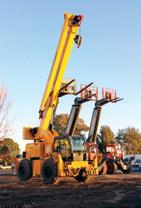
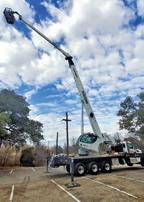
2023 MANITEX 3051T STK# 106098 – CALL FOR PRICE SALE – RENT – RPO
The WORKMASTER™ 25S sub-compact tractor is the perfect “first step” tractor for homeowners and AG-lifestylers who need a hard-working, versatile small tractor to handle the chores a garden tractor just can’t. it’s ready to take on your yard, landscape, gardening and property maintenance jobs. Its compact size makes it easy to operate and maneuver around obstacles and in confined spaces




The Sacramento County Department of Airports, which maintains Sacramento International Airport (SMF), today announced SMForward, a $1.3 Billion expansion project that will reshape the Airport to accommodate projected passenger growth over the next seven years.


SMForward is embarking on a transformative journey, with the launch of six ambitious projects in
2024, including the construction of a stunning $140 million pedestrian walkway. This state-of-the-art walkway will seamlessly connect Terminal B to Concourse B, empowering passengers with the flexibility to choose between a leisurely walk to their gate or utilizing the Airport’s efficient train system
Additional SMForward projects include an addition to both Concourse A and Concourse B,
which will add gates and new amenities, a new Terminal B parking garage, and a consolidated ground transportation center that will centralize taxi, rideshare, and off-site shuttle providers into a single area that is walkable from between both terminals. SMForward is expected to conclude in late 2027 with the completion of a new $400 million consolidated rental car facility, allowing passengers access to

The initiative will expand parking, gates, and create a more seamless travel experience for passengers with the addition of new amenities and services.Above: SMForward is embarking on a transformative journey, with the launch of six ambitious projects in 2024, including the construction of a stunning $140 million pedestrian walkway.
the Airport’s rental car providers without the need to ride a shuttle bus.


SMForward is a major milestone for Sacramento, representing the largest airport construction program in the county’s history. This ambitious project is not just an expansion, but a complete transformation of the airport experience for the people of Sacramento and its visitors. The project will bring about significant improvements and upgrades that will enhance the convenience, comfort, and accessibility of the airport for all.

SMFoward will create jobs and economic opportunities for local businesses, and will also serve as a catalyst for further development in the region. Additionally, the project will also help Sacramento to be more competitive as a destination, attract more visitors and businesses, and ultimately contribute to the growth of the region.
SMForward is a visionary project that will be financed through a combination of federal and state grants, municipal bonds issued by the airport, and user fees. This means that the burden
of financing will not fall on the local taxpayers, rather it will be financed through a collaboration of various stakeholders and users of the airport. This approach not only ensures that the project is sustainable, but also allows the local community to benefit from the project’s economic and social impact without any financial burden.
“The airport is the first impression many people see when they arrive in Northern California – and the last view they will remember as they leave,” said Cindy Nichol, Director of
• Pedestrian Walkway
An improved, ADA compliant, walkway for all visitors between Terminal B and Concourse B built with future expansion in mind. Construction Begins: Summer 2024 Expected Opening: Winter 2025
• Additional Gates for Concourse B & Terminal A

Expansion Additional gates, additional ticketing area, baggage claim carousel and office space.
Construction Begins: Winter 2024
Expected Opening: Spring 2027
• Terminal B Parking Garage An additional 4,500-5,500
parking spaces west of Terminal B.
Construction Begins: Fall 2024
Expected Opening: Spring 2026
• Consolidated Rental Car Center Relocation of our rental car facilities to the terminal area for a streamlined experience.
Construction Begins: Fall 2025
Expected Opening: Summer 2027
Sacramento County Department of Airports. “SMForward will change the airport’s skyline, but it also sets the stage for the airport’s growth and our region’s as a whole.
“Over the next five years, this transformation will create worldclass facilities that will enhance the travel experience while improving crucial infrastructure to meet our growth. Our airfield still has plenty of capacity, but our parking, concourses, and roadways have several choke points. SMForward will address these issues and create an airport ready to serve the modern passenger.”
SMForward comes as air travel demand in the Greater Sacramento region continues to exceed peer airports in the region after unprecedented impacts from the Covid-19 pandemic. 2022 saw SMF nearly return to prepandemic levels, a period that saw six consecutive years of year-overyear record-breaking passenger growth. Forecasts show steady
4.3 percent annually through 2041, underscoring the need for expansion.

“With record numbers of people traveling through SMF and the Greater Sacramento region’s growing economy that continues to create new opportunities, Sacramento International Airport is at a crucial intersection,” said Sacramento County Supervisor Phil Serna, who spoke at Wednesday’s media conference unveiling SMForward. “It is critical to invest in our aviation infrastructure to ensure we can meet the needs of residents and travelers who will make the region an even better place to live, work and visit.”
“SMForward represents the continued implementation of SMF’s master plan, which the Sacramento County Board approved of Supervisors in February 2022. The plan evaluated past and projected passenger growth along with infrastructure
accommodate that growth,” said TJ Chen, Deputy Director of Airport Planning and Development. “In addition to roadways and gates, the master plan anticipates the additional facilities and airfield infrastructure needed to meet the growing demand for air travel.”
“A lot of hard work and planning has gone into ensuring the success of SMForward,” Nichol said. “I want to thank the SMF team and Sacramento County leadership for their dedication and support in helping shape this project.”
Additional information and business opportunities within SMForward can be found on the newly launched website at www. SMForward.com. The website provides a wealth of information on the projects, timelines, and opportunities for businesses and individuals to get involved and be a part of this exciting journey of shaping the future of travel. Stay informed, stay connected, and be a part of the revolution at










Sonsray offers road building equipment for asphalt construction and compaction technology







MLIGHT HEDIUM EAVY
From bike paths to highways, Sonsray Machinery has the machine for the job.

